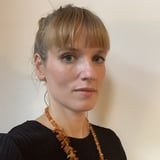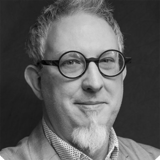Summary
We believe cross-functional team collaboration delivers value faster for users and organizations. However, it’s not always obvious what exactly cross-functional collaboration actually looks like. What practices are necessary to the team’s success? How do you measure team performance? As a developer and a designer, we have direct experience working together and leading teams on truly cross-functional product design and delivery. In our talk, we’ll provide specific examples of what that kind of collaboration can look like, while sharing some of the values and principles that have motivated us.
Key Insights
-
•
Developers struggled to make trade-offs because they lacked understanding of the broader user context.
-
•
Product strategists became frustrated as their detailed user stories began resembling rigid specifications, yet still failed to meet developers' needs.
-
•
Designers held contextual knowledge valuable to the entire team but lacked a channel to share it effectively.
-
•
Using the BICEPS model helps identify and address team members' psychological needs: belonging, improvement, choice, equity, ability, and significance.
-
•
Reimagining biweekly showcases to visualize how individual work contributes to user outcomes dramatically improved team morale and motivation.
-
•
Pairing, modeled after driver-navigator roles, supports dynamic role exchanges that enhance problem solving and learning within cross-functional teams.
-
•
Empathy and trust grow through working closely together and are foundational for effective collaboration and pairing.
-
•
The roles and responsibilities exercise reveals pairing opportunities by matching what people offer with what they need.
-
•
Pairing is not limited to core roles like developers and designers; it can include quality analysts, product managers, customer support, or even informal interests to foster creativity.
-
•
Leadership must explicitly model and support psychological safety to enable honest conversations that break down barriers to collaboration.
Notable Quotes
"Developers were hungry for the bigger picture, but the only information available to them was a set of user stories."
"It felt like an assembly line where you don't really know what is happening before you or after you."
"The BICEPS model helps understand what our co-workers need to feel supported and purposeful."
"Seeing the dots connected so clearly reminded me why I was doing what I was doing."
"Designing as a team means centering all the humans involved, not just the users."
"Pairing is two people with different roles doing an activity together simultaneously, like a driver and a navigator."
"Empathy and trust develop through working together, not in isolation."
"If you have an unmet need, pairing can help address it by matching offers and needs within the team."
"Pairing isn't about taking away jobs; it's about amplifying everyone's expertise and breaking down hierarchy."
"Psychological safety comes from having hard conversations upfront and requires demonstration from leadership."
Or choose a question:
















More Videos

"Designers need to be facilitators of other people's expertise and knowledge, not just creators of designed things."
Sheryl CababaExpanding Your Design Lens with Systems Thinking
February 23, 2023

"Kate Dixon proactively checked on me during COVID and even started a daily movement challenge to keep us connected and healthy."
Caitlyn Hampton Monica Lee Jina YoonCompass 101: Growing Your Career In A Startup World
June 11, 2021

"Plans are useless, but planning is indispensable. You have to keep moving forwards even if the destination keeps changing."
Silke Bochat5 Antifragile Strategies for a DesignOps 2.0
September 23, 2024

"Most executives think user research is big numbers good, small numbers bad, or focus groups with M&Ms."
Christian RohrerInsight Types That Influence Enterprise Decision Makers
May 13, 2015

"Design system is basically an agreement that helps create a sense of consistency and familiarity in all the UIs that you create."
Jaime CreixemsBest Practices when Creating and Maintaining a Design System
June 7, 2023

"Innovation is not a spice that you sprinkle on and suddenly magical new things come out."
Jeff GothelfInnovation Studios: the Engines of Enterprise Experimentation
May 14, 2015

"AI is supposed to make things easier, but it usually comes on with some knock on problems."
Josh Clark Veronika KindredSentient Design: New Design Patterns for New Experiences (3rd of 3 seminars)
February 12, 2025

"The best way to understand something is to become part of it."
Sarah RinkRemote User Research: Dos and Don'ts from the Virtual Field
June 11, 2020

"Users have no choice but to use the software we build, so adoption metrics are often not useful."
Alexandra SchmidtEnterprise UX Playbook
December 1, 2022

















